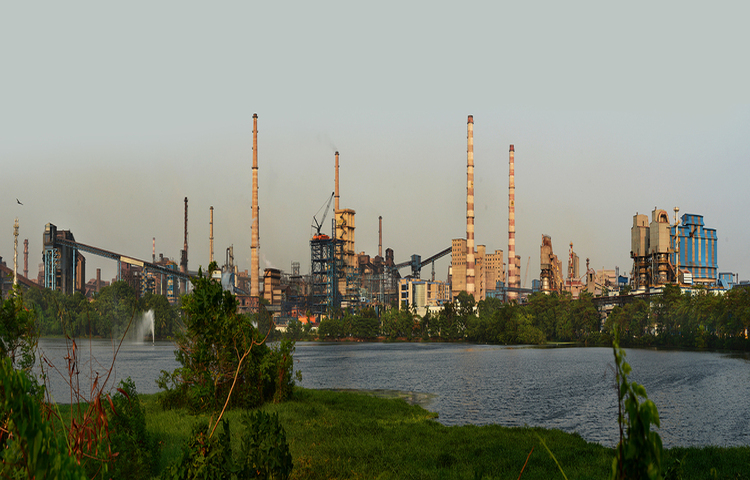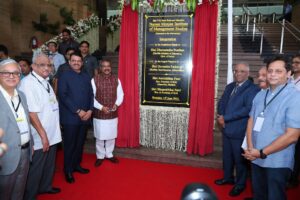
Jindal Steel & Power’s (JSPL) steel and related products’ sales volume took a leap of 16% YoY to 1.51mt in Q1FY20 (standalone). The path breaking performance was beyond the operating leverage argument for the stock. JSPL’s increase in production can be a major boost for the steel giant.
JSPL is a major steel conglomerate founded by Mr O P Jindal, Jindal Steel and Power (JSPL) and incorporated in 1979. The company currently operates in the steel, power, mining, and infrastructure sectors in Asia, Africa, Australia, and the Middle East.
JSPL believes its volume growth will outrun peers in FY20 as it is the only player (among major companies), aside from SAIL, to speed up production. JSLR also believes that its Q1FY20 steel sales estimates of 1.32mt and EBITDA/t (standalone) of INR8,682/t are likely to be met. The stock is currently trading at 5.1x FY21E EBITDA.
Raising volumes could aid earnings in difficult times. Many feel that JSPL has an upper hand over its compared to counterparts due to production ramp up in an otherwise challenging price environment. Q1FY20 production/sales volume of steel and related products was up 17% and 16% YoY to 1.57mt and 1.51mt, respectively.
Speaking on the Indian steel sector, Indian steel demand growth will be one of the strongest in major producing and consuming countries, primarily fuelled by government spending. The government’s thrust on infrastructure and a string of other measures announced (such as National Steel Policy), Indian steel consumption growth will stand at c.6% in FY20 (incorporating weak auto demand) and 7% in FY21 (on higher government infra spending), said a report by Phillip Capital.
JSLPL expect Q1FY20 steel sales volume to meet the 1.31mt expectation. It’s peg sales out beat volume of related products (such as pig iron) at ~0.11mt in Q1FY19., There is limited inventory build-up in Q1FY20 despite waning demand, particularly in June 2019, said Edelweiss in a report. Taking cognizance of operating numbers, one believes their Q1FY20E standalone EBITDA of INR12bn (EBITDA/t of INR8,682) is likely to be achieved.
JSPL is also looking closely at their debt issues and working on them. There has been a debt reduction of close to Rs 85bn in the next couple of years. JSPL’s net debt has already come down by c.Rs 34bn in FY19 despite its Angul capex and higher working capital requirement for the capacity ramp-up. With improving cash flows and absence of any big-ticket capex plans, one expects debt to reduce by additional Rs 85bn, which is a c. 22% reduction over the next couple of years.
Management’s 6.5mt FY20 sales guidance has an achievable target. One could derive more comfort from management’s FY20 guidance of 6.5mt (standalone) sales volume due to: 1) robust Q1FY20E operating numbers; and 2) blast furnace at Angul achieving 10,845tpd production in July. It could expect to reduce operating cost by at least INR1,000/t, added Edelweiss.
Using JSPL’s Q1FY20 operating numbers for reference, we can conclude that there is higher probability of the company meeting FY20 guidance of 6.5mt. One can also conclude that Q1FY20 steel sales will meet the 1.31mt estimate. JSPL is maintaining its ‘BUY/SO’ with TP of INR210/share, implying an exit multiple of 6.2x FY21E EBITDA.
JSPL’s power plant remains underutilised due to poor demand and coal unavailability. As of now, JSPL is utilising 1,600-1,700 MW out of its total capacity of 3,600 MW, as it has a PPA for c.1,070 MW and is selling 500-600 MW through short-term bilateral agreements and merchant markets. The current PPA has been driven by coal linkage for 1,200 MW, and for the rest it buys coal from e-auctions and the spot market. There hasn’t been any new PPA from the government for the last two years, while capacity utilisations were subdued. However, in the government’s recent 2,500MW PPA, JSPL is L1 in 510MW; receiving the final award would improve the utilisation to 47% of capacity from current 31%. JSPL expect its EBITDA/unit to remain at Rs 0.9-1.0.
JSPL has managed to tone its overseas debt to US$ 1.8bn from US$ 2.0bn (equally divided between Oman and other global ventures). One understands that the total interest outgo is c.US$ 100-110mn, but countries like Oman alone has the potential to earn an EBITDA of close to US$ 150-160mn; Mozambique and South Africa mines are likely to earn US$ 10-15mn and US$ 1-2mn per annum, while Australia is still reporting losses. Overall, its overseas operations have plenty cash flows to service their interest themselves. JSPL is looking to sell assets (entirely or partly) to reduce its overseas debt.
Focus on debt reduction will continue JSPL remains committed to deleveraging its balance sheet. Current consolidated net debt stood at c.Rs 392bn (down from Rs 453bn in FY17) and one expects deleveraging intensity to improve on incremental cash flows from the steel business, considering that all its major capex is complete. JSPL is building a Rs 85bn debt reduction in the next few years.



